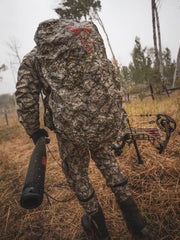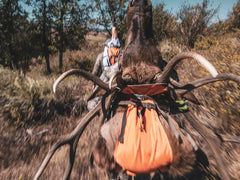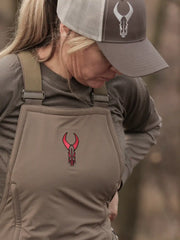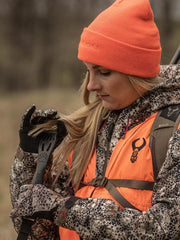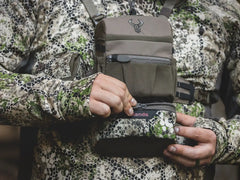Spring is here, and that means it’s time to start thinking turkey. More importantly, it’s time to start talking turkey.
It’s a little-known fact, but turkey is the last of the romance languages, and by far one of the more challenging to speak. Boy, if you can learn a few key phrases though… toms will come running like it’s an open bar on spring break.
So, how do you wrap your head (and tongue, lips and hands) around calling in a hormone-addled turkey? For starters, you find an expert and get some learnin’.
Now, when we think of great turkey hunting, we follow the lead of Tim Endsley and head out for Nebraska. Three subspecies, over the counter tags and tons of access add up to a bird in the smoker.
We reached out to the primo turkey wooer in the state, Aaron Hershberger, an Outdoor Education Specialist with the Nebraska Game and Parks Department. Now we know turkeys don’t actually wear pants, but if they did, “Hershey” could talk them right off.
For you first-time or newer turkey hunters, Hershberger recommends doubling down right away.
 “Buy two calls. A mouth call and a box or slate call,” he said. “You’ll be making turkey music with the box call in just a few minutes of practice. The mouth call will take a bit longer, but once you have that mastered, you’ll have a broad turkey vocabulary.”
“Buy two calls. A mouth call and a box or slate call,” he said. “You’ll be making turkey music with the box call in just a few minutes of practice. The mouth call will take a bit longer, but once you have that mastered, you’ll have a broad turkey vocabulary.”
Tone and pitch matter, he said. But “cadence and rhythm are more important than the perfect sound.”
“Just like people, turkey voices can vary greatly,” Hershberger said. “You want to sound like a hen turkey and they generally yelp quicker and use more yelps than gobblers.”
“Practice your calling to improve your confidence and your sound will improve too. Toms are less demanding than you are, especially this time of year,” he said. “It’s no different than a singles bar for humans, confidence is what you need when that tom is firing back and you have just a few notes to close the deal.”
If you’re a long-time turkey hunter, Hershey has a few tips for you as well.
“Call small for educated birds,” he advised. “Like most birds, turkeys are vocal and use a lot of different sounds. We, as hunters, tend to only yelp and cluck… and really loudly, too. Add in some quiet whines, whistles and drips and you can fool even the wisest of birds. Just be ready, because he may come in a hurry.”
Looking to grow your vocab? Hershberger recommends working a solid purr and kee-kee into your conversation.
“Gargle your way to the perfect purr,” he said. “By vibrating your uvula (that gross thing hanging in the back of your throat) you can make sweet purrs with a mouth call. The easiest way to do this is to simulate gargling… just without the mouthwash.”
“I’ve also ended the hunt with a wary bird with a kee-kee. While this is usually associated with fall hunting, it can be used to fool younger—and dumber—birds in the spring,” Hershberger said. “If nothing else is working, throw a kee-kee in there. You’ll probably be the only one in the woods using it, and the gobbler might just wander over to see what’s going on.”
All great advice from the master of turkey seduction!
Work on these sounds and you should be a turkey-talking fool when season hits. After all, you’re already set with your Badlands Approach camo and Turkey Vest, right?
No?
(Shakes head sadly)
I swear, sometimes I wonder why I even try. Click this link ASAP and make sure you’ve got the gear to go with the calls!
Be sure to share your turkey pics with us on social, too. We love seeing birds on the ground!


